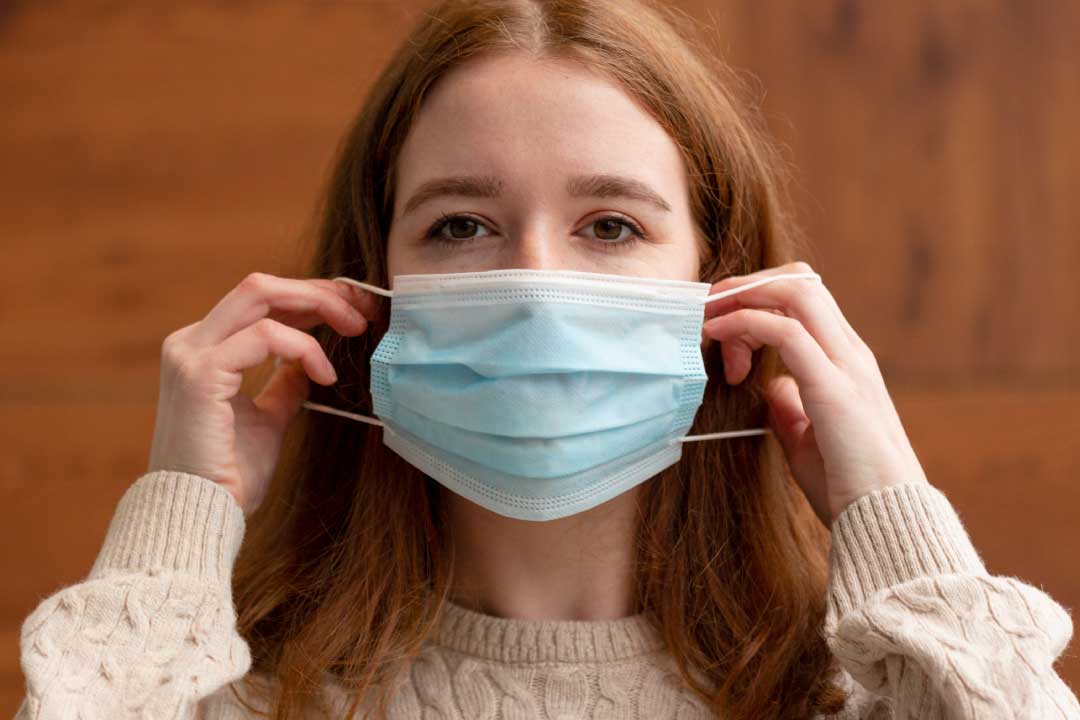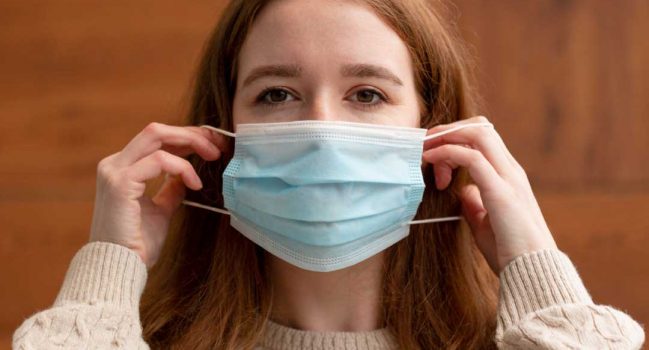
Wearing a mask to help prevent the spread of Covid-19, while important, can be uncomfortable for some. And there is now research coming out indicating that ill-fitting masks could be leading to a rise in the number of cases of dry eye.
Our national office team has put together this blog post talking about Mask Associated Dry Eye (MADE), and steps you can take to prevent or manage dry eye. As always, if you have any concerns, book in for an appointment.
Dry eye disease can be extremely frustrating and upsetting for people who suffer from it.
It is a multifactorial condition which affects one in five adults, caused by a chronic lack of moisture to the surface of the eye.
Dry eye symptoms can range from a combination of a stinging or burning feeling, occasional blurred vision, redness, constant tiredness (like you always need to close your eyes) and/or the feeling that you have something like an eyelash in your eye.
Mask Associated Dry Eye (MADE)
A new source of dry eye problem has arisen during the Covid pandemic – mask associated dry eye (MADE).
That is, a rise in dry eye cases due to the wearing of a poorly fitted face mask.
Wearing a mask helps to reduce the spread of the virus but can, if worn incorrectly, exacerbate dry eye symptoms when a person breathes out, spreading air upward toward the eyes.
Many people wearing a face mask for a long period of time who are not wearing their mask correctly, firmly against their face, are experiencing dry eye symptoms.
This is problematic, particularly for people who have an existing dry eye problem.
When wearing your mask, it is important to wear it snug against your face to help stop the air that you exhale from escaping upwards and over the surface of your eyes. If you wear a loose mask your breath will not only disperse out the sides but also upwards and across the ocular surface which could aggravate dry eye symptoms.
The Centre for Ocular Research and Education (CORE) recommend some simple solutions that can help stop or reduce the severity of dry eye symptoms when wearing a mask.

Dry Eye Treatment
Treatment for mild dry eye disease can be in the form of artificial tears which lubricate the surface of the eyes.
If you are on the computer for long periods, take a break and look into the distance for 20 to 30 seconds to give your eyes a break. By focusing on a computer screen for long periods most people will blink less. As a result, our eyes become dry. Make a deliberate decision to take breaks from the screen and blink. Blinking renews the tear film which prevents dry spots on the eyes.
Drinking plenty of water, especially in hot weather, can help decrease dry eye symptoms, as will supplements containing omega-3 fatty acids.
For those with more severe dry eye symptoms, as part of an ongoing treatment plan, steroid eye drops are used short-term to treat the root cause of the inflammation.
Other treatments for long-term dry eye sufferers include a warm compress to the closed eyelid to soften and unclog the meibomian glands and intense pulsed light (IPL) treatment which flashes filtered wavelengths of light that are absorbed by the dilated blood vessels to reduce inflammation.
Dry Eye Solution Tips
- Adjust your mask so that it fits firmly around your nose and under your eyes to stop your breath escaping upwards.
- Artificial tears will help to lubricate your dry eyes and maintain moisture on the outer surface of your eyes.
- Reduce the time you spend in air-conditioned environments
- Give your eyes regular breaks from digital devices.
Wearing a mask correctly has played a critical role in reducing transmission of the global virus pandemic.
If you have questions about dry eye symptoms make an appointment to see us where we can advise you on an appropriate treatment plan.
Ready to book an appointment?
Online bookings available or call us on (07) 3463 0349.
This website does not provide medical advice. It is intended for informational purposes only. It is not a substitute for professional medical advice, diagnosis or treatment. Never ignore professional medical advice in seeking treatment. If you think you may have a medical emergency, immediately dial Triple 0 (000).

